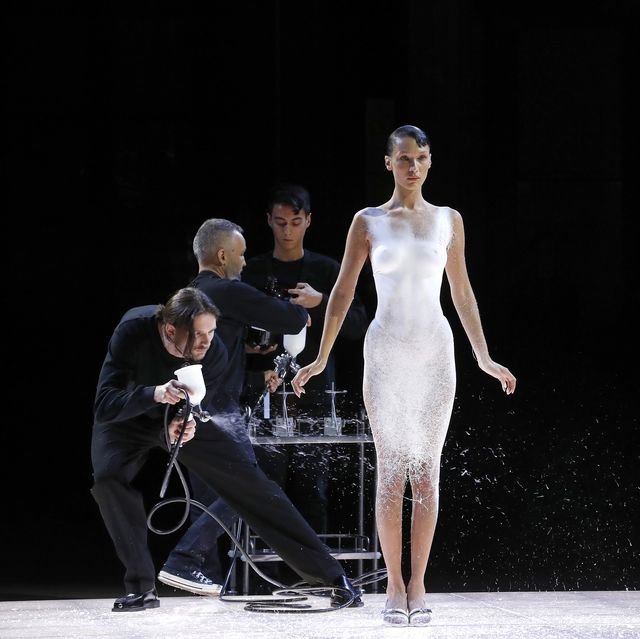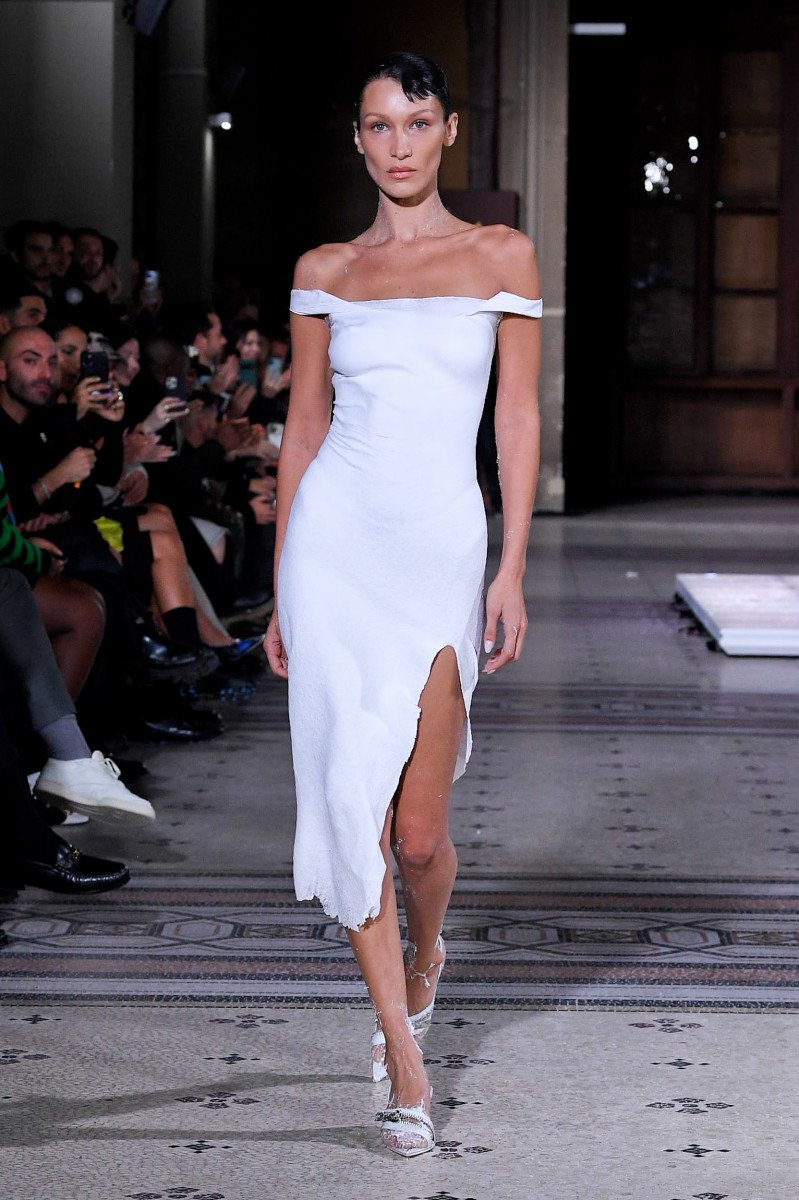Sci-fi Becomes Reality
Coperni introduces spray-on clothing in Paris Fashion Week
Written by Mira Gorton, Financial Director
Who would have thought that a can of silly string and a brilliant mind would pave the way for futuristic fashion? When Dr. Mannuel Torrez received his undergraduate design degree at the Imperial College in London, he had the idea for a spray-on T-shirt. This fleeting, innovative thought became a reality after two years of lab work and play (Nikas, 2022).
In 2003, Dr. Torrez invented a bioengineered, sprayable non-woven fabric called Fabrican (Maguire, 2022). This innovation, paired with the minds of Coperni's design team and 3-D printing, took center stage this past month at Paris Fashion Week.
When Bella Hadid approached the runway wearing nothing but a g-string, audience members were bewildered. This mesmerizing entrance was quickly overlooked when what seemed like cans of spray paint started covering Hadid’s body. After 15 minutes of spraying, the material covered her figure. A woman came onto the runway with a pair of scissors, pulled down sleeves and cut a slit down the front of, what was now, a beautiful white dress (Testa, 2022).
The implications of Coperni’s show-stopping finale are far greater than a simple, stunning runway performance. The material of the fabric can be altered depending on the fibers used in the Fabrican spray, which has many positive associations in the fashion industry and beyond.
The innovative fabric can accelerate the traditional way of constructing garments (Fabrican Spray-on, 2022). It can repair and recycle old clothes and can create seamless materials. Additionally, the material can impact the healthcare industry; it can be used to make face masks, protective garments, sterile towels and bandages (Fabrican Spray-on, 2022). The many purposes of this technology are paving the way for futuristic fashion. Is there a world in which clothes can fit like a glove, be inexpensive and be high fashion?
However, not all responses to the show have been so positive. Some critics, such as Rachel Tashhian from Harper’s Bazaar, have claimed that the invention was gimmicky more than anything (Tashijian, 2022). If accessible, form-fitting clothing was the intention of this flexible product, wouldn’t a plus-size model highlight this aspect better than Bella Hadid? Despite this debate, Bella Hadid’s showcase of technologically-driven prospects in the fashion industry is only the beginning of what Coperni and Fabrican can do.
Sources:
Testa, A. (2022). A Spray-On Dress Caused a Ruckus in Paris. New York Times.
Nikas, J. (2022). How Bella Hadid’s Spray-On Dress Was Made. The CUT.
Fabrican Spray-on fabric sprayable non-woven aerosol technology. (2022). Fabrican Ltd.
Tashjian, R. (2022). What is the Purpose of a Fashion Gimmick? Harper’s Bazaar.



